
Sous vide is an less common approach to cooking and it can seem confusing at first. But, it doesn’t have to be. Actually, the process can be extremely simple once you get the hang of it.
There are many great blogs out there that specifically focus on sous vide cooking. These often have a wide range of recipes for just about every type of dish that you can imagine. In fact, we have our own list of magnificent sous vide recipes.
However, it can look a little overwhelming to make a fancy French sauce when you can’t even make basic stuff! Likewise, you can find many cookbooks out there, but they tend to teach the extravagant and unique rather than beginner stuff.
The basics of sous vide cooking are very simple, and can produce some amazing food. In fact, I rarely do more with my own immersion circulator than just cook meat so it comes out perfectly moist at the correct temperature.
So I wanted to write up a post here for the blog with the most basic of sous vide recipes for home cooks to get you started. They are quite easy to learn, so I recommend just using the freebie resources online to learn the basics, then upgrade to a cookbook or video instructions for the more in-depth recipes.
Top 6 Basic Sous Vide Recipes
For the most part, simple sous vide recipes involve three key components: the prep, the cooking, and the finishing steps. Each of these areas is often simple and the directions for cooking are just based on time and temperature.
That means season, stuff in a bag, then sear.
We’re going to cover steak, chicken, pork chops, brisket, salmon, and eggs. If you want a specific recipe, let us know in the comments and we’ll add it!
1. Sous Vide Steak
- Medium-Rare: 129ºF
- Medium: 135ºF

Without a doubt, steak is one of the most popular foods that people cook with sous vide. For that matter, getting the perfect steak is often a key reason that people get involved with sous vide in the first place.
The ideal steak is one that is seared and flavorful on the outside while being exactly right on the inside. So, if you’re trying to create a medium-rare steak, you want the inside to be pink and moist.
Getting this right in a frying pan is incredibly difficult and you’ll often end up burning the outside and/or overcooking the middle. This happens because the outside of the steak cooks faster. Likewise, it’s difficult to determine whether you have the inside precisely right, without cutting the steak open (which ruins the presentation).
Cooking a steak conventionally is also very time sensitive. Even just having it in the pan a minute too long can ruin it entirely. On the other hand, sous vide cooking allows you to make the perfect steak every time.
The first step for doing so is to just season the steak as you want to and then seal it in the bag. Often people will just rely on salt and pepper for the seasoning but you can go with whatever your preference is. Adding some herbs to the bag along with a little olive oil (or another type of oil/fat) also helps in getting a great steak.
When it comes to cooking steak, you just need to pick the right time and temperature. Generally speaking, the thickness of the steak will affect what time you choose and the temperature is based on how you want your steak to end up (rare, medium rare, etc.).
For example, rare steak is typically cooked at around 120°F, while a medium one is around 140°F and well-done is around 160°F. You can tweak from there to figure out exactly what temperature works for you.
In most cases, you would be cooking the steak for around an hour but anything up to four is normally fine, especially for thicker cuts.
As with other types of meat, you do still need to sear the steak separately after it has been cooked via sous vide. However, this is easily achieved and you can use any techniques that you would when cooking a conventional steak.
For example, you could use a cast iron pan with a little bit of butter or oil. Alternatively, some people even use blow torches to briefly char steak and other meat before serving.
Regardless of the method, searing steak like this would typically be fast. After all, the meat is already cooked to perfection, so you just need to get the outside exactly how you want it.
FoodForNet Recipes
2. Sous Vide Chicken
- Breast: 149ºF
- Thigh: 165ºF

Chicken is another common meat to cook in sous vide because you want to get that temperature just right so not to overcook and dry it out, or undercook and make everyone sick. Chicken breasts are the most common, since they have very little fat, and thus very little wiggle-room with regards to temperature and doneness. Like lean steak, they tend to be sensitive and conventional methods often result in overcooking.
Prior to cooking, you would prep the chicken breasts the same was as any other approach. For example, you might season them with herbs and spices, and you could also add in lemon slices, if you chose to.
As with steak, there is a range of temperatures that you can use with sous vide chicken. These range from around 140°F to 160°F. The lower temperatures result in moister chicken that falls apart easily, while the higher ones tend to be overcooked.
Generally speaking, you would want to be somewhere between 140°F and 150°F to get the best possible results. However, this does come down to personal preference, so you may want to try out different temperatures to see which outcome suits you.
The cooking time will vary depending on the type of chicken that you’re cooking and how thick it is. However, in most cases, you would be looking at between one and four hours, regardless of the temperature you’re using.
As with steak, you can also sear the chicken afterward if you want to or you could briefly bake it in the oven to get the finish you want.
Now, doing so may not be relevant for chicken breast itself, but you can cook any type of chicken via sous vide. So, if you cooked bone-in pieces of chicken with skin, you may want to ensure the skin is nice and crispy before you serve the dish.
Note: I tried to sous vide a turkey once, and it was a major pain in the ***. It turned out super juicy, but it was a lot of work breaking that thing down, and it wasn’t a beautiful glazed turkey for thanksgiving.
FoodForNet Recipes
- Sous Vide Chinese-Style Fried Chicken
- Sous Vide Iberian Chicken Legs
- Sous Vide Cajun-Spiced Chicken Breast
3. Sous Vide Pork
- Pork Chop: 144ºF
- Pork Shoulder: 140ºF – 158ºF
- Pork Shank: 158ºF
- Pork Belly: 140ºF

Pork is another good option for sous vide cooking, regardless of whether you are doing a pork chop, pork tenderloin or even an entire pork roast. Sure, you can make good pork conventionally as well but it is tricky to get right.
For the most part, the temperature and cooking times for pork end up being fairly similar to steak. In particular, you would cook rare pork at around 130°F, medium-rare at 140°F and well-done at 160°F.
In each case, you would cook the pork for at least an hour but up to four if you wanted to. The longer cook times would be especially relevant to thick pieces of pork, particularly if they included a bone.
The prep and finishing work is also similar to steak. So, to prep, you rely on whatever herbs and spices you would normally consider. This could include salt and pepper but you might get more creative as well. This part is all about the flavors you like, so feel free to experiment.
Browning the meat after sous vide cooking is easy as well. The first step is to simply dry it off and then use a skillet or cast iron pan along with some type of fat. Many people choose butter but there is no shortage of options. The process isn’t going to take long because the meat is already fully cooked.
Additionally, you want to make sure that the pan is very hot when you add the meat. Otherwise the searing process could take too long and you would risk overcooking the meat.
FoodForNet Recipes
- Sous Vide Mustard and Molasses Pork Belly Strips
- Sous Vide Asian BBQ Pork Chops with Spicy Pickled Apples
4. Sous Vide Brisket
- Target Temperature: 154ºF

Most of the time, brisket is a barbecue meat and there’s no reason why you cannot cook it that way. However, brisket does tend to demand a considerable amount of attention, which isn’t always desirable.
In contrast, cooking brisket via sous vide lets you get a great outcome without all the effort. And, once again, relying on sous vide means that you can get consistent results every time, without having to guess.
It is even possible to get the same smoky flavor with sous vide cooking, simply by the way that you finish the meat.
Compared to other meats, brisket requires more prep work because you have a specific outcome that you’re looking for. To start off with, you need to cut the brisket in half (to make it fit in the bags). Each half is then rubbed with pepper and salt, and placed into a separate bag.
Once in the bags, you add a few drops of liquid smoke, seal then and store in the fridge for a few hours. This allows the flavors to permeate the meat.
After this point, the brisket can be cooked in the sous vide. The common temperatures are either 135°F or 155°F. The lower option will create a texture similar to steak, while the higher temperature will result in brisket that readily falls apart.
If you’re going with the higher temperature (155°F), cooking will take from 24 to 36 hours. Otherwise, the cooking is 36 to 72 hours. Once cooked, the brisket needs to be cooled to room temperature. It can even be stored in the fridge for as much as a week like this.
Finally, as with other types of meat, you need to finish the brisket. This can be done on the grill or in the oven using similar techniques that you would normally use with this type of meat. Again, your techniques would mostly come down to personal preference and be based on the specific outcomes that you are looking for.
FoodForNet Beef Recipes
5. Sous Vide Salmon
- Target Temperature: 104ºF (soft & buttery) – 131ºF (firm)

I just can’t cook fish without sous vide anymore. Actually, my favorite fish to cook is halibut, but it’s a pricey type of fish, so I eat salmon way more often. Cooking fish with sous vide means a couple things.
- Less time monitoring the fish for the exact moment it’s done
- Practically impossible to overcook
- Less fishy smell in the house since you’re just searing on the stove
Salmon is much more forgiving, and even a “very” done salmon that’s flaky will still have enough fat content to taste OK with a bit of sauce. However, I prefer the soft and buttery version, which is very difficult to get without sous vide.
At 104º, the salmon is almost like a cream, and just a quick sear on the top is enough for beautiful presentation. You won’t have to worry about accidentally eating sashimi tonight LOL
The 113ºF is also a popular temperature, achieving a more flaky (but not overdone) texture, but I usually aim for a bit lower, then just spend more time in the pan. Experiment, and see what you like!
FoodForNet Salmon Recipes
6. Sous Vide Poached Eggs
Target Temperature: 140ºF – 150ºF depending on your personal taste!

Sous vide eggs are amazing. And, once again, it is much easier to get consistent results this way than with conventional methods, and you just can’t go wrong with eggs cooked exactly how you like them.
In effect, you’re basically slow cooking eggs. With this approach, you’re just cooking the eggs directly in their shells, which makes it an incredibly simple process. You can actually do sous vide scrambled eggs and get soft, tender, fluffy eggs like no other method.
With eggs, the cooking temperature has a dramatic effect on the end result because they are so delicate. As such, you need to choose the temperature based on the outcome you want. For example, when the cooking time is 40 minutes, the eggs are similar to poached at 145°F. In contrast, they are soft boiled at 150°F or 155°F, depending on how soft you like them.
Best Sous Vide Device!
All of the videos featured on this page feature the Chefsteps Joule (review), my #1, all-time, absolutely favorite immersion circulator. It’s got a sleek design, rock-solid construction, and locks down your recipes with precision cooking.
Plus, their app is one of kind. Chefsteps only does sous vide, and that’s why they do it best.
Other Sous Vide Recipes
The entries above detail some of the main foods that you can make with sous vide cooking but the list certainly isn’t exhaustive. Instead, sous vide is a fairly versatile process, especially as it is possible to vary both the cooking time and the temperature.
With this in mind, there are many other options for sous vide, including some that are relatively unusual. For example, you can make sous vide mashed potatoes by cooking sliced potatoes for around 30 minutes and then pureeing them through a sieve.
Likewise, it is possible to cook yogurt, custardy desserts (like crème brûlée), purees and even kale through sous vide, provided that you have the right recipe at hand.
Sous Vide Cookbooks and Sous Vide Recipe Sites
As you can see, sous vide cooking is a flexible process and it isn’t just limited to cooking meat. Instead, you can make many different types of meals.
The recipes above are all general guidelines and there is the potential for significant variation to the time and the temperature that you use when cooking.
For example, cooking food for longer than suggested doesn’t result in overcooking in the traditional sense. However, the texture of the food can change considerably. This can be seen with chicken.
If you cook that too long in sous vide, the end result will be stringy. But, it will still be moist. In fact, some people actually prefer that outcome.
Because of this, both the temperature and time can dramatically affect your outcomes. This is particularly significant if you are planning an entire meal.
You can figure out the best options by starting with general concepts (like the ones above) and using trial and error to figure out the best settings for you. But, recipe books and food sites can also be powerful places to start.
Chef Steps
One of these is chefsteps.com. The site offers amazing recipes but what makes it stand out is the sheer level of detail. The posts go into depth about sous vide cooking, including images and information about what effects different cooking temperatures and times have.
Now, Chef Steps isn’t exclusively about sous vide, so there are many other recipes on there as well. But, they do have a specific section for sous vide, which includes recipes, information and guides.
Serious Eats
Another powerful site is seriouseats.com. Like Chef Steps, this site covers a range of cooking types, with sous vide just being one option. Their recipes truly are fantastic though and they have been featured in many of the roundups on this site.
Once again, the site does have a section specifically for sous vide. This includes a range of recipes and also information about relevant techniques.
There aren’t as many sous vide recipes as I would like on there but the site still makes a good resource, especially if you are still learning the basics.
Amazing Food Made Easy
Another interesting place to consider is amazingfoodmadeeasy.com. The unique thing about this site is that it has a strong focus on modernist food and techniques. This may help you learn some different ideas and means that many of the recipes are somewhat unusual.
I like that they post original recipes, not just re-makes of famous recipes. The owner really gets creative, and really has a strong passion for sous vide cooking.
Anova Culinary
Anova is actually a brand that offers an especially popular immersion circulator (which I have reviewed in the past). But, the company’s site at anovaculinary.com is worth relying on for their recipes, even if you don’t actually use the product itself.
The recipe section of the site is well-designed and extremely easy to follow, with no shortage of images. The recipes themselves are specifically designed for Anova’s product. But, you could easily make them with any other sous vide equipment.






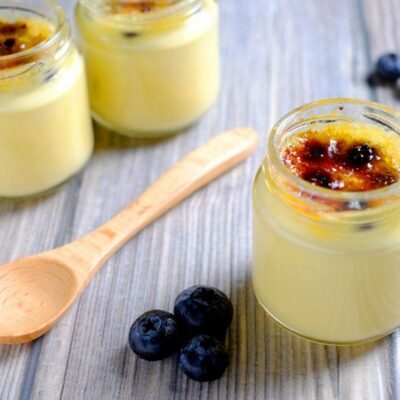



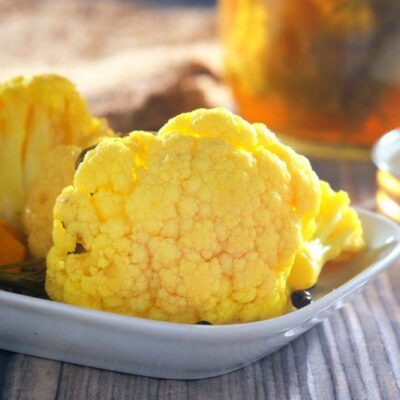

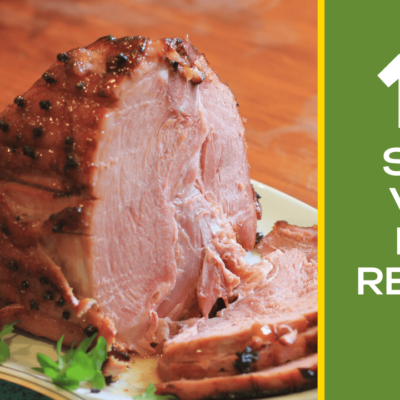
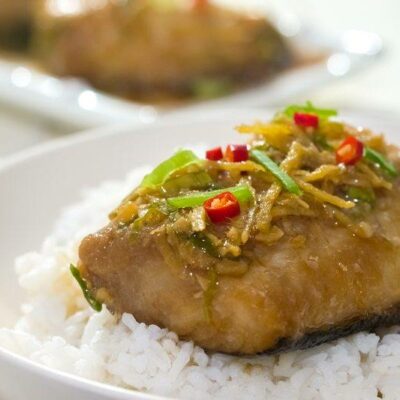

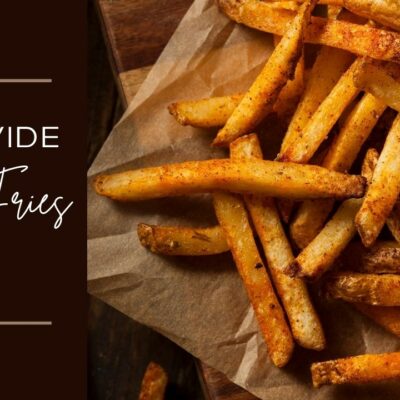
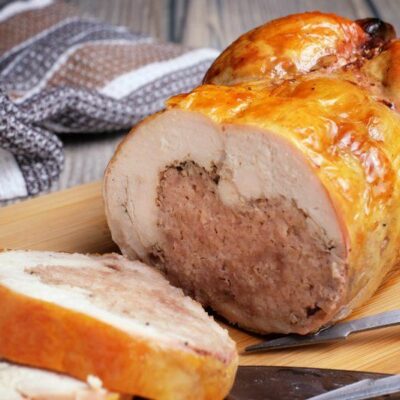

 My 5 Picks For Best Immersion Circulators For Home Use
My 5 Picks For Best Immersion Circulators For Home Use
Leave a Reply